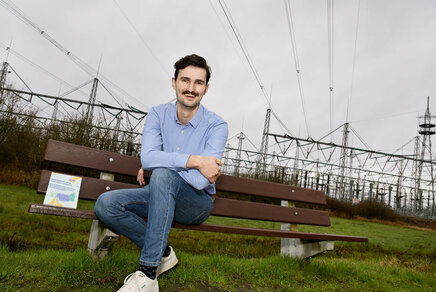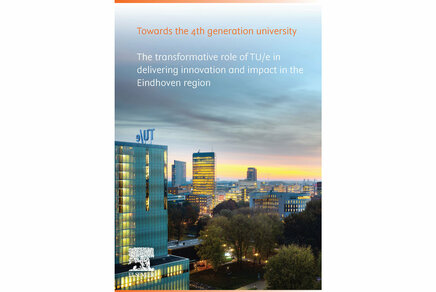TU/e students use little iron balls to safely store and transport hydrogen
SOLID hopes to build a demo in the port of Rotterdam by 2027.

TU/e student team SOLID has developed an alternative technique that enables the safe storage and transport of hydrogen (specifically; the energy from hydrogen). In this process, small iron balls are used as energy carriers. The students have built an test setup, the so-called Steam Iron Reactor One (SIR One), which will be used for testing in the near future. The team's ambition is to scale up the system in the coming years and realize a demo in the port of Rotterdam in 2027.
The system works as follows; the energy of hydrogen is stored via a reaction with iron oxide (also known as rust), producing iron and water. In the process, the iron serves as a storage medium that can be easily transported. Then, to provide hydrogen, iron must be brought into contact with steam, after which hydrogen and iron oxide remain. This creates a cycle in which iron acts as a kind of sustainable 'hydrogen battery', with the note that it is not hydrogen but iron that is stored and transported.
High energy density
According to the students, the small iron balls (also called iron pellets) are an ideal form of storage because of their high energy density. Hydrogen is now usually stored in tanks under a pressure of 700 bar, in order to increase its energy density. Iron has an energy density many times higher, and therefore can store up to three times more energy per volume than hydrogen under pressure.
Through this technique, student team SOLID, together with partners Metropool Regio Eindhoven, Metalot, RIFT, DNV and TU Eindhoven, is trying to tackle one of the major challenges in the energy transition, which is the transportation and storage of green energy. With electricity grids congested and limited storage options in conventional batteries, green hydrogen must play a major role in making polluting industries more sustainable.
800 million euros
The Dutch government is already investing heavily in hydrogen. For example, the government is allocating 800 million euros for a number of large hydrogen projects. "This subsidy goes largely to the production of hydrogen, but what about its storage and distribution? In the future, only thirty percent of CO2 emissions in the Netherlands can be made sustainable through the current network of pipelines," explains Max Winkel, SOLID team manager. "Companies in energy-intensive industries often want to become more sustainable, but electrification is not a realistic solution in many cases. For them, we are trying to develop a solution."
Timme Ter Horst, Business Manager at SOLID, adds: "Iron pellets can also be transported more safely than the loose variant of hydrogen. As a result, safety restrictions are also less stringent for iron than for hydrogen. Also, iron is one of the most abundant elements on earth, so our technology could provide a cheaper alternative for the large-scale storage and distribution of hydrogen in the future."
Richard van de Sanden, professor and scientific director of energy research institute EIRES, thinks SOLID's contribution could become interesting for companies in a true hydrogen economy. "This technique is not completely new, though you could say that the technique is back from the past. This is because iron is an easy medium to store and transport. It's good that SOLID is working on this."
Demo in port of Rotterdam
The students will use the reactor in the near future to try to make the process as efficient as possible by, among other things, extending the life of the iron pellets. Plans are already in place to scale up the current system to SIR Two, with a storage capacity 15 times larger than the current prototype, equivalent to 500 kWh. SIR Two should lay the foundation for SIR Three. The student team's ambition is to set up this demo setup in the port of Rotterdam in 2027, where the technology is to be demonstrated on an industrial scale at a relevant end user.
This is not the first time SOLID has developed a breakthrough technology. In 2020, the student team with the Metal Power consortium had a world first with the first industrial iron powder combustion plant, a project initiated by Professor Philip de Goey. That was presented at the Bavaria brewery in Lieshout, where it provided heat to the brewing process. Currently, that technology, which uses iron for heat storage, is being further developed by former SOLID students in the start-up RIFT, researchers at TU Eindhoven and the Living Lab Metal Power Consortium. SOLID itself will continue to focus on using iron for hydrogen storage.
Media contact
More on Sustainability



Latest news


![[Translate to English:] [Translate to English:]](https://assets.w3.tue.nl/w/fileadmin/_processed_/e/6/csm_Hendriks%20Banner%20image%20Photonic%20crystal%20fiber-tip%20sensor%20BvOF_9b4093b84b.jpg)